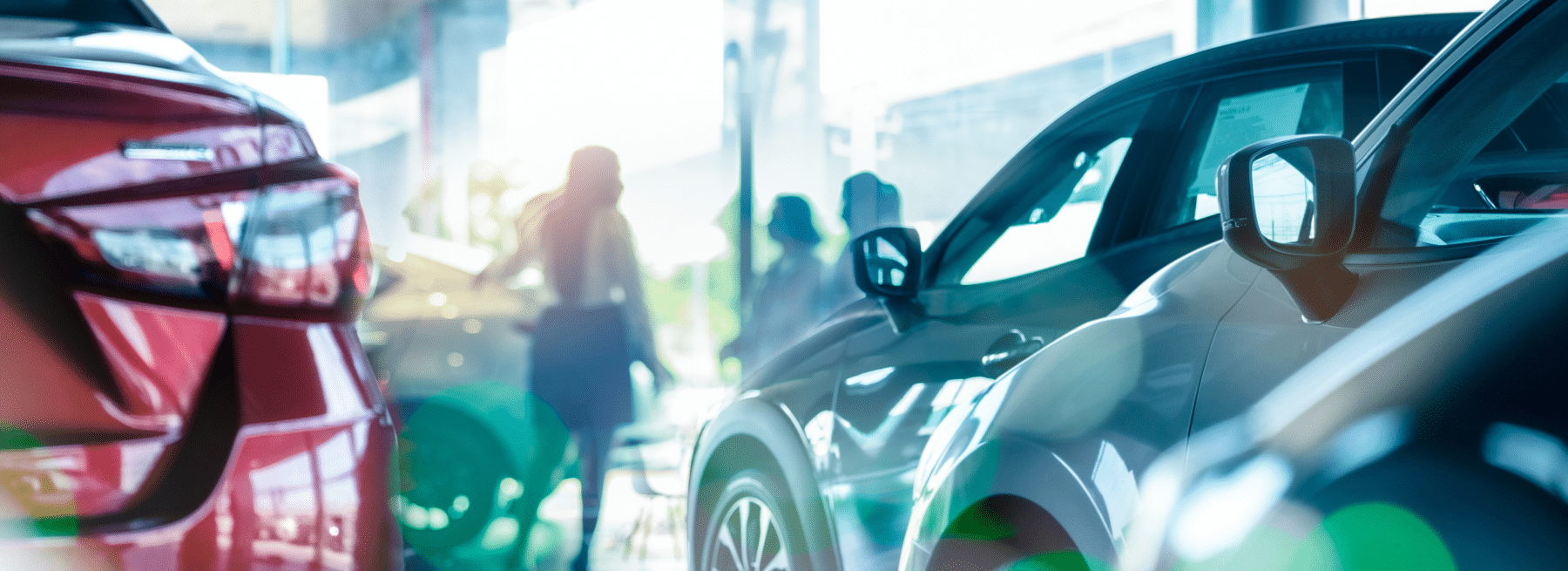Knowing about the automotive trends helps dealerships and others in the industry find opportunities to gain a competitive advantage. Understanding these automotive trends not only gives you a better understanding of where the industry is heading but also helps you be prepared for pivoting and adapting to changes.
The industry has seen a lot of mergers and acquisitions. The automotive industry is full of more uncertainties than certainties. However, knowing about automotive trends can provide powerful insights to help with decision-making. With dealerships facing mounting pressure from manufacturers, information is power.
The Top 6 Automotive Trends
Here are the automotive trends that affect automotive dealerships, OEMs, and others in the automotive industry.
1. Increase in online shopping for vehicles
Thanks to the growth of carsharing and ridesharing, vehicles are a commodity more than ever before. This is important to know because it changes how customers approach car buying. In the past, customers would visit a few local dealerships to compare vehicles and pricing. In some cases, customers may have had no plans to buy a vehicle. Then, they spontaneously stop at a dealership when a vehicle catches their attention. They drive off the lot with the new vehicle.
Then, the internet changed car shopping. People would read up on vehicles. They’d narrow the list and then search dealerships to compare vehicles, features, prices, and more. This was the de facto standard until the pandemic completely changed the car purchasing process.
One reason for the transformation is the shortage of vehicle inventories. The broken supply chain had a huge impact as semiconductor chips were hard to come by. Multiple industries had to fight for the few chips available. It’s the law of supply and demand.
With the world shut down, people had to buy new computers since they had to do everything online. Semiconductor companies sent more of their chips to computer manufacturers rather than OEMs. Additionally, the shortage of new and pre-owned vehicles forced customers to look for vehicles outside of their local dealerships. Owners even drove long distances to pick up a vehicle that met their specifications.
During the height of the pandemic, some dealerships got creative. Customers would do their vehicle shopping online. When they were ready for a test drive, the dealership brought the vehicle to the customer’s home. Customers never visited the dealership as they could do all their financing online and sign the papers at home.
It turns out the online shopping experience proved to be a better one than in person as a Progressive Insurance study found. Owners who bought their vehicle online were 20% more likely to feel highly satisfied with their experience than those who went in person. Customers say they prefer online shopping because it saves time and costs.
Additionally, the KPMG Annual Global Automotive Executive Survey reports that 78% of survey participants believe most new vehicle sales will take place online. Therefore, dealerships must ensure they have all the tools in place to allow customers to buy from them without visiting the dealership.
2. Autonomous vehicles
Self-driving cars are getting safer, becoming more fuel efficient, and cutting CO2 emissions. Moreover, research says autonomous vehicles can reduce downtime, driver fatigue, and accidents associated with negligence.
That’s why the automotive and tech industries have largely increased their investments in self-driving vehicles. One e-commerce company has been using electric vans. Trucking companies are installing and testing self-driving technology. Autonomous vehicles contain sensors, artificial intelligence, and machine learning to help them navigate traffic and objects in the way.
3. Connectivity
Connectivity refers to vehicles connected to the Internet of Things and the Internet. When it comes to connectivity, the first thing most people think of is infotainment, multimedia, and owner-device connectivity. This allows the driver to connect their devices to the vehicle to safely use them. For example, they use voice commands to manage their phone calls and text messages. They do not have to interact with the device.
Vehicles with wireless communication and driver assistance functions can communicate with their surroundings. The car can talk to other nearby vehicles to share real-time information about the road and traffic to ensure safety. This lets drivers get the most current traffic updates. Vehicles can also connect smart home technologies to allow the driver to manage their smart home functions.
Connected vehicles can do remote diagnostics, send digital data and health reports, connect to Wi-Fi hotspots, and report vehicle problems to reduce the chances of a breakdown. Advancements in connectivity will include predictive analytics and maintenance technologies. These allow the vehicle to catch problems early and warn the owner. Of course, passengers can take advantage of the connectivity for their own entertainment.
4. Shared mobility
Thanks to connectivity, shared mobility is growing. It offers an alternative to vehicle ownership. The way shared mobility works is that at least two people will share the same vehicle on a short-term basis. Have you seen scooters parked around town? Anyone can connect to them through an app and use them. This is an example of shared mobility. Carsharing works similarly in that the vehicles can be located at public transit stations, universities, and neighborhoods.
The carsharing company is responsible for insurance, gasoline, parking, and maintenance. Users pay a fee each time they use the service. This approach helps maximize the use of vehicles without adding more vehicles on the roads. Shared mobility is an affordable and convenient replacement for vehicle ownership. Drivers won’t have to deal with the hassles of ownership, such as insurance, inspections, and maintenance.
5. Rising electric vehicle sales
Electric vehicle sales are soaring. The International Energy Agency reports the U.S. had only 0.2 million electric vehicle sales in 2016. Then the number soared to 1.6 million in 2023. Per IEA, electric vehicle sales have more than tripled in the past three years. Sales continue to climb as electric vehicle prices drop and batteries become more efficient and last longer.
The advancement of fuel-cell electric vehicles is also driving up adoption. They tend to recharge faster, use less water, and have five times the range of other electric cars. These vehicles contain a fuel cell in combination with a small battery or supercapacitor.
6. Artificial intelligence
Artificial intelligence includes deep learning and machine learning. These technologies help automotive manufacturers design safer vehicles and accelerate vehicle production while cutting costs. Artificial intelligence can produce ideas that human designers wouldn’t consider. It makes them better designers. For example, using algorithms, AI can produce many designs based on predefined parameters.
One AI startup offers fleet-management applications that provide insights into the fleets’ speed, health vitals, and other information. Fleet drivers will have a voice assistant that provides them with needed information to optimize their driving and safety. The system can help prevent dangerous driving behaviors by tracking the speed limits.
These are the top six automotive trends. There are many more that haven’t been discussed. Some other trends include 3D printing, the Internet of Things, big data and analytics, and blockchain. Based on these automotive trends, what can dealerships do to stay competitive? Here are some options.
How to Dealerships Can Stay Competitive
Automotive dealerships can future proof their business to stay ahead of the competition. Here are some ways to achieve that.
If you haven’t already, ensure you have a transparent online shopping process. This includes financing and paperwork. Some dealerships allow customers to get preapproval for financing before they start shopping around for vehicles. A well-designed process will have a high satisfaction rate because it’s effortless and quick. The customer can do it all from their home.
J&L Marketing research indicates owners are 86 times more likely to purchase their next vehicle from the dealership they use for servicing and maintenance. Therefore, another option is to add more dealership service lanes. This is how you can keep your business in front of the customer. Otherwise, it could be a long time between buying vehicles. Having a strong servicing and maintenance system can compel owners to bring their vehicles to your dealership.
Besides, Technavio Research expects Advanced Driver Assistance Systems (ADAS) to grow by almost $20 billion between 2021 and 2025. Selling ADAS parts and equipment could expand your dealership’s reach and lead to more customer touches. As you expand your service department, consider offering inspections as well as tire and wheel services.
Inspections lead to upselling opportunities as they may find a vehicle needs alignment. This is a high-margin service. With the growing number of electric vehicles, it may make sense to add EV repair and maintenance services.
Electric vehicles have a shorter life span for tires than traditional vehicles. This can create more opportunities for interacting with the customer. It’s critical to have an effective process and system for the service department. It goes a long way to ensuring lower wait times and great customer experiences.
The last option is to invest in a dealership service lane kit. This can help protect your service department from litigious people who make claims about their car or service.
Stealth Monitoring’s service lane kit consists of high-definition IP cameras placed strategically in the service area. The video cameras can record every part of the vehicle as it enters the service lane. This along, with the general overview cameras of the service lane, helped a dealership win a personal injury claim. A customer alleged they fell on the lot. Since a service lane kit can record everything, the recordings proved the dealership wasn’t responsible for the fall.
Another Stealth Monitoring customer avoided the cost associated with a customer’s claim that the dealership had dented their vehicle while it was undergoing servicing. Stealth investigated and found the vehicle already had damage when it arrived at the service lane. To learn more about dealership service lane kits, pick up this guide to four auto dealership theft trends. If you have questions, please contact us.
Texas Private Security License Number: B14187
California Alarm Operator License Number: ACO7876
Florida Alarm System Contractor I License Number: EF20001598
Tennessee Alarm Contracting Company License Number: 2294
Virginia Private Security Services Business License Number: 11-19499
Alabama Electronic Security License # 002116
Canada TSBC License: LEL0200704

